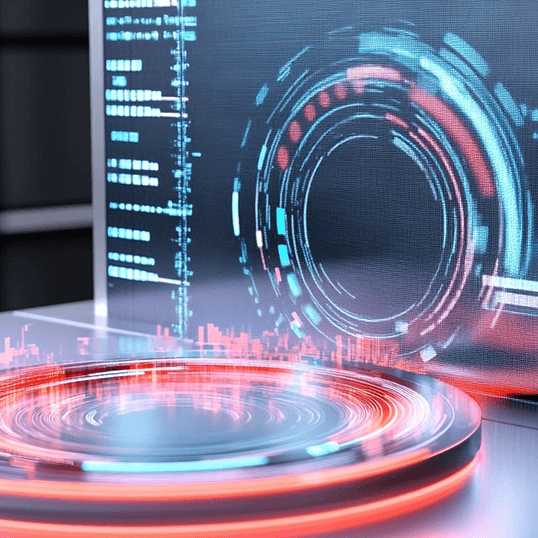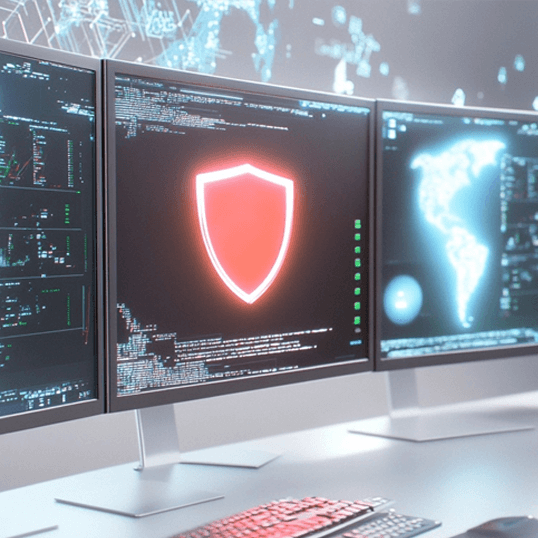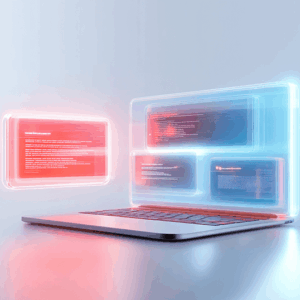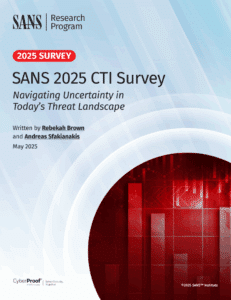Introduction
The healthcare industry is rapidly adopting Internet of Things (IoT) devices to enhance patient care, monitor real-time health data, and improve operational efficiency. However, this increased connectivity introduces significant cybersecurity risks, making IoT healthcare devices a prime target for cybercriminals. These devices, including smart infusion pumps, connected pacemakers, remote patient monitors, and diagnostic machines, often have limited security controls, weak authentication mechanisms, and outdated firmware, making them vulnerable to cyberattacks. Implementing MDR Security Monitoring helps detect and respond to these threats in real time, ensuring continuous protection for critical medical systems and patient data.
A successful attack on healthcare IoT devices can have devastating consequences, from stealing sensitive patient data to disrupting life-saving treatments. Cybercriminals can exploit vulnerabilities in these devices to gain unauthorized access to hospital networks, launch ransomware attacks, or even manipulate critical medical functions, putting patient safety at risk.
To address these threats, Managed Detection and Response (MDR) Security Monitoring and Managed Extended Detection and Response (XDR) Security offer real-time threat detection, continuous monitoring, and automated response capabilities. Managed XDR (Extended Detection and Response) goes beyond traditional MDR by integrating and correlating data across multiple security layers, providing broader visibility and more advanced threat detection.
This article explores why IoT healthcare devices are at risk, how MDR Security Monitoring enhances IoT security, and how Managed XDR Security provides a comprehensive defense strategy for protecting critical medical systems and patient data.
The Growing Cybersecurity Threat to IoT Healthcare Devices
Why Are IoT Healthcare Devices a Target for Cybercriminals?
Healthcare IoT devices are high-value targets for cybercriminals due to their expanding role in medical care and their weak security infrastructure. These devices lack built-in security mechanisms, making them easier to compromise. Many medical devices run on outdated operating systems, making them highly vulnerable to known exploits and security gaps that hackers can exploit.
Cybercriminals target these devices to steal patient records, manipulate medical treatments, or launch large-scale cyberattacks on healthcare networks. These attacks can have serious consequences, including:
- Data Breaches: Hackers gain access to electronic health records (EHRs), leading to identity theft and insurance fraud.
- Ransomware Attacks: Cybercriminals encrypt critical hospital systems and demand payment to restore functionality.
- Disrupted Medical Operations: Attacks on smart infusion pumps or ventilators could interfere with life-saving treatments.
Furthermore, IoT healthcare devices are often interconnected, meaning that one compromised device can lead to a full-scale security breach. Cybercriminals exploit this connectivity to move laterally through hospital networks, gaining access to larger pools of sensitive data and critical medical infrastructure.
Notable IoT Cybersecurity Incidents in Healthcare
Several real-world cyberattacks highlight the urgent need for stronger IoT security in healthcare. In 2020, a ransomware attack on a German hospital resulted in the death of a patient after critical systems were locked, delaying emergency treatment. In 2021, a major healthcare data breach in the U.S. exposed the personal information of over 45 million patients due to poor IoT device security. In 2023, security researchers discovered vulnerabilities in smart infusion pumps, allowing hackers to remotely manipulate drug dosages, posing a direct threat to patient safety.
These incidents emphasize the need for proactive security measures, such as MDR Security Monitoring and Managed XDR Security, to prevent cyberattacks and safeguard IoT healthcare devices.
How MDR Security Monitoring Enhances IoT Healthcare Security
What Is MDR Security Monitoring?
Managed Detection and Response (MDR) Security Monitoring is a cybersecurity service that provides continuous monitoring, advanced threat detection, and rapid incident response to protect organizations from cyber threats. Unlike traditional security solutions, which rely on manual threat detection, MDR security leverages AI-driven analytics and automated threat intelligence to detect cyberattacks in real time.
MDR Security identifies vulnerabilities in IoT healthcare devices, continuously scans for anomalous network activity, and responds to security threats before they escalate. By combining threat intelligence, machine learning, and behavioral analytics, MDR Security Monitoring provides a proactive defense against cyberattacks targeting IoT healthcare devices.
Key Components of MDR Security Monitoring for IoT Healthcare Devices
MDR Security Monitoring offers several critical features designed to enhance IoT healthcare security. 24/7 threat monitoring ensures that all connected medical devices are under constant surveillance. AI-powered threat detection identifies unusual network traffic and behavioral anomalies that may indicate an attack.
Endpoint security for IoT devices protects against unauthorized access and malware infections, while incident response and remediation capabilities enable security teams to contain and neutralize threats quickly. Additionally, behavioral analytics detects suspicious activity patterns, helping prevent cyberattacks before they happen.
By implementing MDR Security Monitoring, healthcare organizations gain real-time visibility into security threats affecting IoT devices and can take action before a breach occurs.
The Role of Managed XDR Security in Protecting Healthcare IoT Devices
What Is Managed XDR Security?
Managed Extended Detection and Response (XDR) Security is an advanced cybersecurity framework that integrates threat intelligence, machine learning, and security automation to detect and neutralize cyber threats across IoT, cloud, endpoints, and networks. Unlike standalone security solutions, Managed XDR Security provides a unified security platform to protect all aspects of healthcare infrastructure.
How Managed XDR Security Improves IoT Healthcare Security
Managed XDR Security enhances healthcare IoT security in several ways. Advanced threat intelligence continuously monitors emerging cyber threats targeting medical devices, providing early warning alerts to security teams.
Automated threat detection and response allows healthcare providers to instantly isolate compromised devices, block malicious activity, and mitigate security risks before they impact patient care. Zero Trust access controls ensure that only authorized users and medical personnel can access IoT healthcare networks, preventing unauthorized access and data breaches.
Additionally, Managed XDR Security enforces security policies tailored to healthcare IoT environments, ensuring compliance with HIPAA, GDPR, and NIST cybersecurity standards. By integrating Managed XDR Security, healthcare organizations can significantly reduce cyber risks and enhance patient data protection.
Best Practices for Securing IoT Healthcare Devices
Implement Strong Authentication and Access Controls
One of the primary security weaknesses in IoT healthcare devices is the lack of strong authentication mechanisms. Many devices use default usernames and passwords, which cybercriminals can easily exploit. Multi-factor authentication (MFA) should be implemented to add an extra layer of security, ensuring that only authorized users can access medical devices and networks.
Apply Regular Software and Firmware Updates
Outdated software is one of the most common attack vectors for IoT healthcare devices. Many medical devices run on legacy operating systems that do not receive regular security patches. Healthcare organizations must ensure that software and firmware updates are regularly applied to prevent known vulnerabilities from being exploited by hackers.
Use Network Segmentation to Protect Critical Systems
Network segmentation is essential to minimize the impact of cyberattacks. By separating IoT medical devices from critical hospital systems and patient databases, healthcare organizations can limit an attacker’s ability to move laterally within the network. This reduces the likelihood of ransomware spreading to multiple systems and improves overall security resilience.
Deploy Real-Time Threat Monitoring with MDR Security Monitoring and XDR Security
Continuous monitoring of IoT device traffic is crucial for detecting and mitigating cyber threats in real time. MDR Security Monitoring and Managed XDR Security provide automated threat detection, incident response, and forensic analysis, allowing healthcare providers to quickly identify and neutralize cyber threats before they cause harm.
Conduct Regular Security Audits and Risk Assessments
Healthcare organizations should perform regular security assessments to identify vulnerabilities in IoT medical devices and take proactive measures to strengthen their security posture. Risk assessments help security teams prioritize critical threats and implement Zero Trust security frameworks to protect sensitive patient data and medical networks.
Conclusion
IoT healthcare devices play a critical role in modern medicine, improving patient care, enabling remote monitoring, and streamlining hospital operations. However, their increasing connectivity introduces serious cybersecurity risks. Many IoT medical devices lack built-in security controls, rely on outdated software, and operate in highly interconnected hospital networks, making them prime targets for cybercriminals. A successful cyberattack on IoT healthcare devices can lead to stolen patient records, disruption of life-saving treatments, and even direct manipulation of medical equipment, posing a severe risk to patient safety.
The healthcare industry must take a proactive approach to cybersecurity. By implementing MDR Security Monitoring and Managed XDR Security, organizations can continuously monitor IoT devices, detect anomalies in real time, and respond to cyber threats before they escalate. MDR provides round-the-clock monitoring and rapid incident response, while Managed XDR Security integrates advanced threat intelligence, AI-driven analytics, and Zero Trust security controls to prevent unauthorized access and cyberattacks on connected medical devices.
Investing in these next-generation cybersecurity solutions ensures that hospitals, clinics, and remote healthcare providers remain compliant with industry regulations while safeguarding patient data and critical medical infrastructure. As cyber threats evolve, healthcare organizations must prioritize IoT security and adopt proactive defense strategies to prevent attacks before they disrupt medical services.
🚀 Now is the time for healthcare organizations to strengthen their cybersecurity defenses—invest in MDR and Managed XDR services today! 🚀
FAQ
Why are IoT healthcare devices vulnerable to cyberattacks?
IoT healthcare devices are vulnerable because they often lack strong security features, operate on outdated software, and store or transmit sensitive patient data. Many devices use weak authentication mechanisms and are interconnected, allowing hackers to move laterally within hospital networks once a single device is compromised.
How does MDR Security Monitoring help protect IoT healthcare devices?
MDR Security Monitoring provides real-time threat detection, 24/7 monitoring, and automated response capabilities to protect IoT medical devices. It leverages AI-driven threat intelligence and behavioral analytics to identify cyber threats before they escalate, ensuring early detection and rapid mitigation of security risks.
What role does Managed XDR Security play in healthcare cybersecurity?
Managed XDR Security enhances cybersecurity by integrating security data across IoT devices, cloud platforms, networks, and endpoints. It applies automated threat detection, Zero Trust security controls, and AI-powered analytics to identify and contain cyber threats targeting healthcare organizations.
What are the main cyber threats facing IoT healthcare devices?
IoT healthcare devices are at risk from:
- Ransomware attacks, where cybercriminals lock critical hospital systems and demand payment.
- Data breaches, leading to theft of patient records and financial fraud.
- Remote hijacking of medical devices, allowing hackers to manipulate treatment settings or disrupt care delivery.
- Distributed Denial-of-Service (DDoS) attacks, which overload healthcare networks and disrupt medical operations.
What best practices can healthcare organizations follow to secure IoT medical devices?
Healthcare organizations should implement the following best practices:
- Use multi-factor authentication (MFA) to prevent unauthorized access.
- Apply regular software and firmware updates to patch vulnerabilities.
- Segment IoT healthcare networks to limit lateral movement of cyber threats.
- Deploy MDR Security Monitoring and Managed XDR Security for real-time visibility and automated threat response.
- Conduct regular risk assessments to identify and address security weaknesses proactively.
Why is cybersecurity important for compliance with healthcare regulations?Regulations like HIPAA, GDPR, and NIST require healthcare providers to protect patient data and secure medical devices from cyber threats. Failing to implement strong cybersecurity measures can lead to data breaches, legal penalties, and reputational damage. By adopting MDR Security Monitoring and Managed XDR Security, healthcare organizations ensure compliance with industry standards while safeguarding patient health and data privacy.













